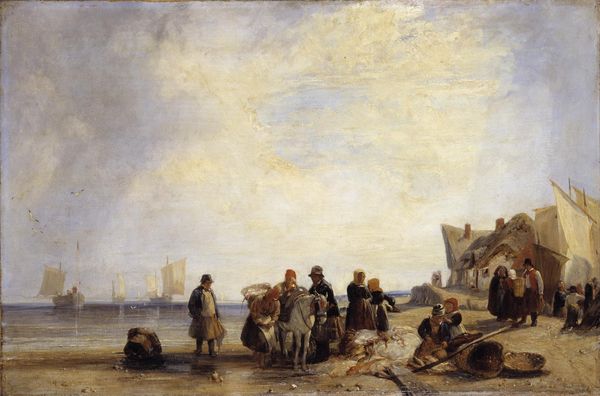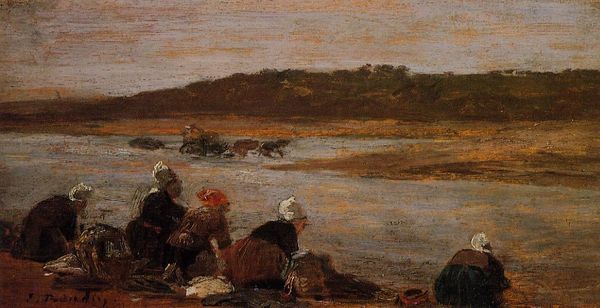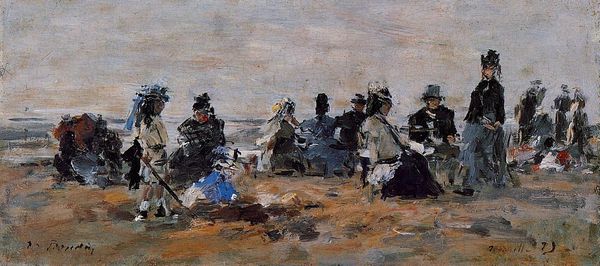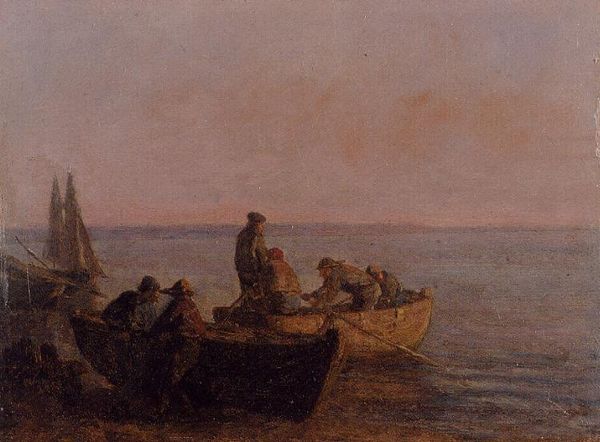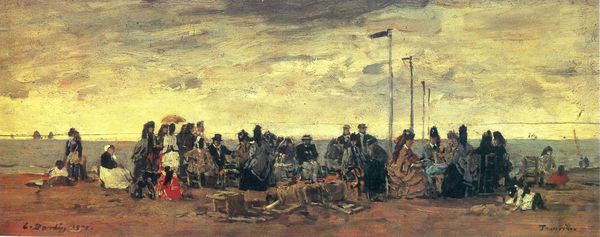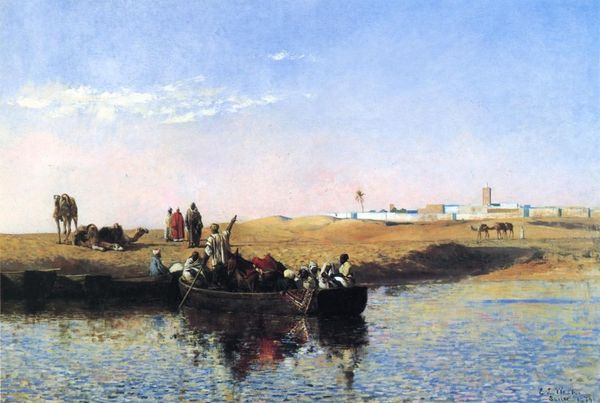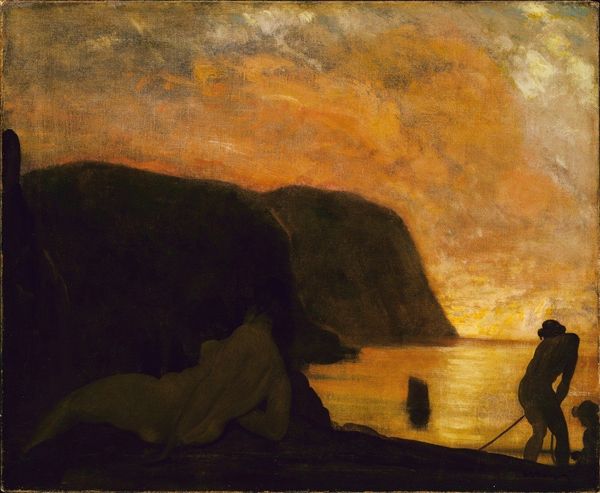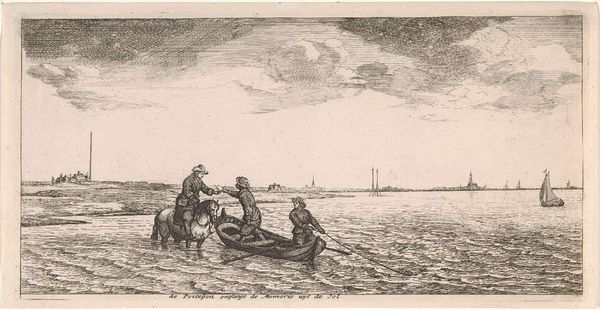
Copyright: Public domain
Edgar Degas painted "Promenade by the Sea" at an unknown date, using oil on canvas. Predominantly composed of earth tones, the composition is divided into three horizontal sections—the sky, the sea, and the land. Note how Degas employs loose brushstrokes and indistinct forms, typical of Impressionism, yet the structural arrangement adheres to a classical balance. The figures on horseback in the foreground, rendered as dark silhouettes, direct the viewer's gaze towards the pale, hazy horizon. The tension between clarity and ambiguity destabilizes traditional landscape painting. Consider the semiotic implications of the sea, often a symbol of the infinite and the unknown. Here, Degas uses it to frame a dialogue between the known—represented by the figures and the immediate landscape—and the unknown, which is the distant horizon. It is this interplay between the concrete and the abstract that allows the painting to function as a site of contemplation, challenging our perception of space and meaning.
Comments
No comments
Be the first to comment and join the conversation on the ultimate creative platform.
